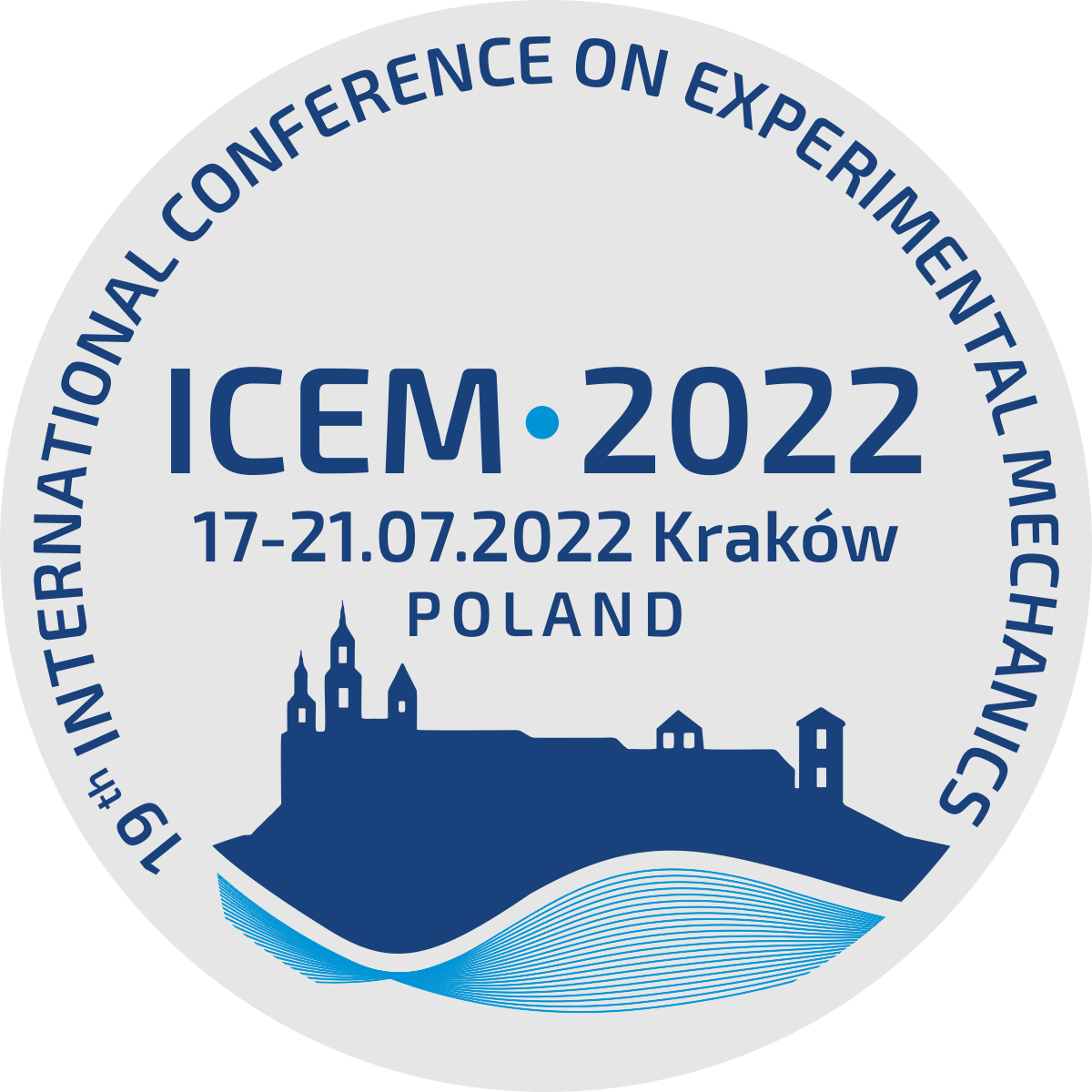| 1. |
Kamiński J.♦, Adamczyk-Cieślak B.♦, Kopeć M., Kosiński A.♦, Sitek R.♦, Effects of Reduction-Oxidation Cycles on the Structure, Heat and Corrosion Resistance of Haynes 282 Nickel Alloy Manufactured by Using Powder Bed Fusion-Laser Beam Method,
materials and corrosion, ISSN: 0947-5117, DOI: 10.1002/maco.202414477, pp.1-14, 2024 Abstract:
The study investigated the effect of the oxidation–reduction cycles on the structure and corrosion resistance of the Haynes 282 nickel superalloy at ambient and elevated temperatures. The comparative studies were performed on specimens produced by the Powder Bed Fusion-Laser Beam (PBF-LB) process and those in the as-received state. The microstructure of the PBF-LB specimens was studied using optical and scanning electron microscopy, whereas the chemical composition of the scale formed after isothermal oxidation in an air atmosphere at 750°C was analysed using energy-dispersive X-ray spectroscopy and X-ray Photoelectron Spectroscopy. The phase composition of the formed scale was determined by X-ray diffraction. Laboratory-induced hydrogen atmosphere was adopted through cathodic charging. A comparison of corrosion resistance was carried out on two types of Haynes 282 specimens, before and after the oxidation and cathodic charging processes. It was found that PBF-LB process could be effectively used to manufacture Haynes 282 nickel superalloy with low porosity and a fine crystalline microstructure. The low-porous, fine-crystalline microstructure of the tested specimens produced by the PBF-LB technique exhibited good resistance to electrochemical corrosion, slightly lower than wrought Haynes 282 nickel superalloy specimens. Keywords:
corrosion, DMLS, haynes 282 nickel superalloy, hydrogen, oxidation Affiliations:
| Kamiński J. | - | other affiliation | | Adamczyk-Cieślak B. | - | other affiliation | | Kopeć M. | - | IPPT PAN | | Kosiński A. | - | other affiliation | | Sitek R. | - | Warsaw University of Technology (PL) |
|  |
| 2. |
Haponova O., Tarelnyk V.♦, Mościcki T. P., Tarelnyk N.♦, Półrolniczak J.♦, Myslyvchenko O.♦, Adamczyk-Cieślak B.♦, Sulej-Chojnacka J.♦, Investigation of the Structure and Properties of MoS2 Coatings Obtained by Electrospark Alloying,
Coatings, ISSN: 2079-6412, DOI: 10.3390/coatings14050563, Vol.14, No.563, pp.1-15, 2024 Abstract:
Electrospark coatings alloyed with MoS2 have been studied. The coatings were obtained by the following two strategies: the first consisted of pre-applying molybdenum disulfide to the treated surface and alloying with a molybdenum electrode (Mo + MoS2 coating); the second consisted of applying a paste with a sulfur content of 33.3% to the treated surface and alloying with a molybdenum electrode (Mo + S coating). The structure, phase composition, and tribological properties of the coatings were investigated. The coatings have a complex structure consisting of an upper soft layer, a hardened white layer, a diffusion zone, and a substrate. Element analysis and cross-sectional hardness changes indicated that element diffusion occurred at the coating/substrate interface. The phase composition of the coatings is represented by BCC and FCC solid solutions on Fe, and MoS2 is also detected. In Mo + S coatings, the molybdenum disulfide on the surface is about 8%; in Mo + MoS2 coatings, it is 27%–46%. The obtained coatings show very good tribological properties compared to molybdenum ESA coatings. The frictional forces and coefficients are reduced by a factor of 10 and 40, depending on the test conditions. Keywords:
electrospark alloying, coating, structure, molybdenum disulfide, tribological properties, energy conservation Affiliations:
| Haponova O. | - | IPPT PAN | | Tarelnyk V. | - | Sumy National Agrarian University (UA) | | Mościcki T. P. | - | IPPT PAN | | Tarelnyk N. | - | Sumy National Agrarian University (UA) | | Półrolniczak J. | - | other affiliation | | Myslyvchenko O. | - | I. M. Frantsevich Institute for Problems in Materials (UA) | | Adamczyk-Cieślak B. | - | other affiliation | | Sulej-Chojnacka J. | - | other affiliation |
|  |
| 3. |
Zgłobicka I.♦, Dobkowska A.♦, Zielińska A.♦, Borucińska E.♦, Kruszewski M.♦, Zybała R.♦, Płociński T.♦, Idaszek J.♦, Jaroszewicz J.♦, Paradowski K.♦, Adamczyk-Cieślak B.♦, Nikiforow K.♦, Bucholc B., Święszkowski W.♦, Kurzydłowski K.♦, In-depth analysis of the influence of bio-silica filler ( Didymosphenia geminata frustules) on the properties of Mg matrix composites,
Journal of Magnesium and Alloys, ISSN: 2213-9567, DOI: 10.1016/j.jma.2023.08.001, Vol.11, pp.2853-2871, 2023 Abstract:
A novel metal matrix composites (MMC) with Mg matrix reinforced with natural filler in the form of Didymosphenia geminata frustules (algae with distinctive siliceous shells) are presented in this work. Pulse plasma sintering (PPS) was used to manufacture Mg-based composites with 1, 5 and 10 vol.% ceramic filler. As a reference, pure Mg was sintered. The results show that the addition of 1 vol.% Didymosphenia geminata frustules to the Mg matrix increases its corrosion resistance by supporting passivation reactions, and do not affect the morphology of L929 fibroblasts. Addition of 5 vol.% the filler does not cause cytotoxic effects, but it supports microgalvanic reactions leading to the greater corrosion rate. Higher content than 5 vol.% the filler causes significant microgalvanic corrosion, as well as increases cytotoxicity due to the greater micro-galvanic effect of the composites containing 10 and 15 vol.% diatoms. The results of contact angle measurements show the hydrophilic character of the investigated materials, with slightly increase in numerical values with addition of amount of ceramic reinforcement. The addition of Didymosphenia geminata frustules causes changes in a thermo-elastic properties such as mean apparent value of coefficient of thermal expansion (CTE) and thermal conductivity (λ). The addition of siliceous reinforcement resulted in a linear decrease of CTE and reduction in thermal conductivity over the entire temperature range. With the increasing addition of Didymosphenia geminata frustules, an increase in strength with a decrease in compressive strain is observed. In all composites an increase in microhardness was attained.
The results clearly indicate that filler in the form of Didymosphenia geminata frustules may significantly change the most important properties of pure Mg, indicating its wide potential in the application of Mg-based composites with a special focus on biomedical use. Keywords:
Metal-matrix composites (MMCs),Pulse plasma sintering (PPS),Ceramic filler,Microstructure,Properties Affiliations:
| Zgłobicka I. | - | other affiliation | | Dobkowska A. | - | other affiliation | | Zielińska A. | - | other affiliation | | Borucińska E. | - | other affiliation | | Kruszewski M. | - | other affiliation | | Zybała R. | - | Warsaw University of Technology (PL) | | Płociński T. | - | Warsaw University of Technology (PL) | | Idaszek J. | - | other affiliation | | Jaroszewicz J. | - | other affiliation | | Paradowski K. | - | other affiliation | | Adamczyk-Cieślak B. | - | other affiliation | | Nikiforow K. | - | other affiliation | | Bucholc B. | - | IPPT PAN | | Święszkowski W. | - | other affiliation | | Kurzydłowski K. | - | other affiliation |
|  |
| 4. |
Borowski T.♦, Zielińska K.♦, Spychalski M.♦, Adamczyk-Cieślak B.♦, Żrodowski Ł.♦, Effect of oxidation temperature on the properties of niobium in view of its biomedical applications,
SURFACE AND COATINGS TECHNOLOGY, ISSN: 0257-8972, DOI: 10.1016/j.surfcoat.2023.129911, Vol.473, No.129911, pp.1-11, 2023 Abstract:
Four-hour oxidation processes of niobium in an air atmosphere at temperatures of 400 °C, 425 °C, 450 °C and 500 °C were carried out. In order to characterise the layers produced, the cross-sectional microstructure, chemical and phase composition as well as surface roughness were examined. The mechanical properties of the surface were determined by performing Vickers microhardness tests. In order to verify the properties from a biological point of view, contact angle analysis and corrosion tests in Ringer's solution were carried out. The results revealed the formation of layers composed of a solid solution of oxygen in niobium Nb(O) at oxidation temperatures of 400 °C, a solution of Nb(O) and niobium pentoxide Nb2O5 at 425 °C, and Nb2O5 at 450 °C and 500 °C. Increased oxidation temperature resulted in an increase in hardness and surface roughness, and each process contributed to improved corrosion resistance. Oxidation at too high temperature (≥450 °C) caused degradation of the material's surface due to niobium's low heat resistance. At 450 °C the first cracks in the material were visible, and at 500 °C the layer was inhomogeneous, brittle and underwent significant chipping. The highest hardness, roughness and hydrophobic properties were shown by niobium oxidised at 500 °C, which underwent surface degradation at this temperature. In turn, niobium oxidised at 400 °C and 425 °C showed outstanding properties in the biological aspect, achieving both high hydrophilicity and the highest corrosion resistance. Keywords:
Niobium, Oxidation, Microstructure, Corrosion, Contact angle, Surface engineering Affiliations:
| Borowski T. | - | other affiliation | | Zielińska K. | - | other affiliation | | Spychalski M. | - | other affiliation | | Adamczyk-Cieślak B. | - | other affiliation | | Żrodowski Ł. | - | other affiliation |
|  |























